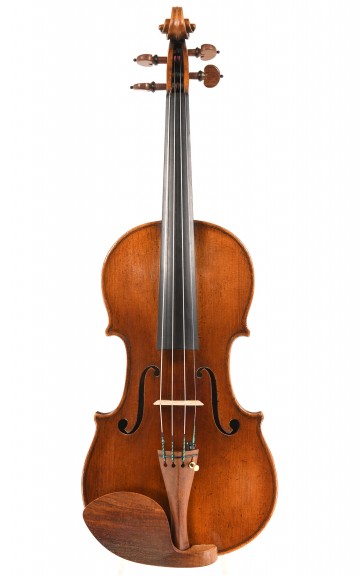Violin maker Stephan von Baehr is an exceptional presence amongst the luthiers of his generation.
Stephan von Baehr is a master of exquisite details, and he sees his art as a quest for ideal architecture. His concept is based on the idea that there are no unimportant issues when it comes to the way stringed instruments resonate and vibrate: he believes that miniscule changes taken as a whole can yield the greatest difference. From early on, this exacting approach helped Stephan von Baehr establish an excellent reputation among professional musicians and win awards which are far from common for a luthier of his generation.
Content overview:
- Stephan von Baehr's education
- Recognition of violkin maker Stephan von Baehr
- Inspiration of Stephan von Baehr
Violin maker Stephan von Baehr's education
Stephan von Baehr was born in Schwerin, East Germany in 1972. Von Baehr completed his training in the studio of Reinhard Bönsch in Markneukirchen and learned the art of wood carving from Jochen Heinzmann. The fall of the Berlin Wall in 1989 opened up unforeseeable new opportunities to the young journeyman who had just completed his training, since he was now free to perfect his skills in outstanding ateliers throughout Europe. These were to include Andreas Kägi's atelier in Berlin, where Stephan von Baehr had the chance to study several Stradivari instruments in detail as he restored them. In 1993 he was offered a position as a restorer of historic instruments under Bernard Sabatier in Paris, and a year later he passed the German master exam with top marks.
Recognition of luthier Stephan von Baehr
One milestone in Stephan von Baehr's career was the RNCM International Cello Festival in 1998, where one of his instruments received the highest recognition from the jury of renowned experts led by Charles Beare. Encouraged by this praise from such a qualified source, Stephan von Baehr then chose to focus all of his attention on crafting new instruments. With the support of his former master Sabatier, he opened his own workshop on Rue de Rome, the street in Paris where many famous luthiers have their ateliers. In addition to his success in Manchester, Stephan von Baehr went on to earn gold and silver medals at numerous international violin-making competitions, such as Salt Lake City, Portland and Cleveland; at the 2001 competition in Mittenwald, he was awarded a special prize for the best and most distinctive work – an honour he is particularly proud of. He has already received multiple commissions from German and French foundations such as Natexis and the Deutsche Stiftung Musikleben to create instruments for rising talents.
Inspiration for Stephan von Baehr, violin maker
Stephan von Baehr, as the son of two professional violinists, has understood the demands and needs of professional musicians since his childhood. The artists who play his instruments include soloists such as Isabelle Faust and Lise Berthaud as well as leading orchestra members such as Berlin Philharmonic's solo cellist Olaf Maninger. At some Vienna Philharmonic concerts, Stephan von Baehr reports, there are six of his violas on the stage. Many members of such great orchestras use concert trips to Paris as an occasion to visit his atelier, where they can further refine the sound of their instruments with the help of its creator.
When asked about the sources of his inspiration, Stephan von Baehr speaks of the epoch when Stradivari and Guarneri were active, a time when the principles of an ideal violin architecture were developed. Their role models are something he always bears in mind, and he does so by keeping significant pieces from the golden age of Cremonese violin making at his atelier on a regular basis not as objects for sale or restoration, but simply as a template as he works on new instruments. Others are present as realistic detailed silicon casts, directly at his workbench, representing historic Italian craftsmanship which can rightfully claim to be unique. This awareness of the tried-and-true informs many aspects of his work, including the strong ties he maintains with those who play his instruments – a mutually fruitful constellation, and one from which many great things can be expected in the future.
Related articles:
Nicolas Lupot - the "French Stradivarius"
Mirecourt's new masters: contemporary violin makers in Mirecourt
Stradivari's heirs: contemporary violin makers in Cremona
Daniele Scolari and the second generation of the new art of violin-making in Cremona
Working in the shadow of the factories: violin makers from China and Taiwan
Samuel Zygmuntowicz: understanding Stradivarius
Jan Špidlen - Art, innovation – and sport
Christoph Götting: excellence by tradition
Patrick Robin - a master of teaching an the craft
Marcus Klimke: a highly decorated luthier
International violin making competitions -- an overview




